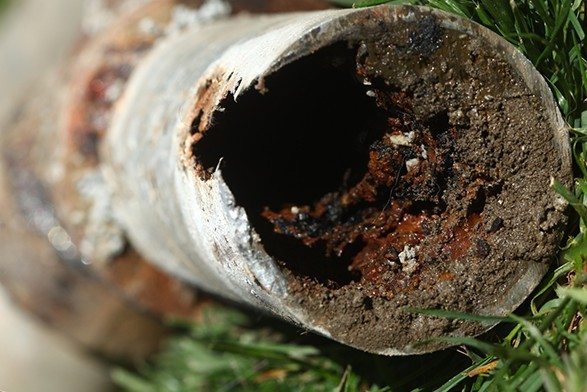Sewer Backup Coverage: A Building Owner’s Friend
If you’ve received our postcards, you may have noticed that our policies include sewer backup coverage. That’s because backed-up sewers can cause a great deal of damage to floors, walls, furniture and electrical systems.
Most insurance companies offer sewer backup coverage for a nominal cost, so we recommend it for added peace of mind.
Causes of Sewer Backup
Aging sewer systems
A report from the American Society of Civil Engineers indicates that the nation’s 500,000-plus miles of sewer lines are, on average, more than 30 years old. In addition, the number of homes connected to those aging lines has increased. As a result, the number of backed-up sewers is increasing each year.
Combined pipelines
Another issue comes from systems that combine storm water and raw sewage into the same pipeline. In fact, New York City has the largest combined system in the country. Storms can expose these systems to more volume than they can handle. Sewage can spew out into basements and other low-lying drains.
Tree root blockages
Thirsty trees and shrubs can make their way into sewer line cracks. As the plants grow, so do their roots. Tree roots can travel a long way, and roots from different types of trees act differently. If you have an issue and city trees may be the culprit, your plumber can contact the city. Root samples will help identify the trees and who’s responsible for cleanup.
Sanitary main
Sometimes blockages occur in a city sanitary main. If the blockage isn’t detected quickly, sewage can back up into homes and businesses through floor drains. This usually happens slowly, but if water is entering the building rapidly, call the city public works office and report the problem immediately. Residents of New York City can also use this link to report an issue online.
Sewer Laterals: An Owner’s Responsibility
Many homeowners don’t realize that they are responsible for maintaining and repairing the pipe that connects their property to the city sewer main. This pipeline, known as a sewer lateral, is owned by the property owner. A cracked or deteriorated lateral, or one filled with tree roots, can allow groundwater into the sewer system. This can also contribute to sewer backup.
How to Prevent Sewer Backups
While protection is great, prevention is even better. Here are some tips for preventing backups in your sewer lateral and in the city main:
Dispose of grease properly
Cooking oil doesn’t belong in the drain. In fact, fat, oil and grease, or FOG, are the leading cause of sewer backup complaints in New York City. Instead, put grease and oil in a heat-resistant container, and dispose of them in the garbage.
Dispose of paper products properly
Paper towels, diapers and feminine products can wreak havoc in the sewer lateral, as well as in the main. These items don’t deteriorate quickly, like toilet paper, so they should also go in the trash.
Install a backwater prevention valve
A backwater valve is a fixture installed into a sewer line or drain line to prevent sewer back-flows. Properly installed and maintained, these valves allow sewage to go out, but not come back in. Building owners are responsible for installation and maintenance of these valves, which should be installed by a licensed plumber.
Stu Cohen, founder of City Building Owners Insurance Program, was quoted in this article from The New York Times, part of which discusses plumbing issues.
We hope you never have the unpleasant experience of a sewer backup problem. If you have any questions about this issue, or if you’re interested in adding sewer backup coverage to your building insurance or would like a free insurance review, please call our office at 877-576-5200.


